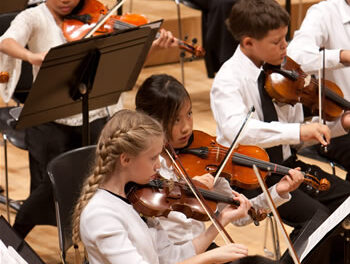Begging your indulgence, as a preface to my remarks on the Justice Theater Project‘s production of Langston Hughes’ Black Nativity: A Gospel Song Play at Pittman Auditorium on the St. Mary’s campus in Raleigh, this lengthy quotation from the Wikipedia entry on the play:
“Black Nativity is a retelling of the classic Nativity story with an entirely black cast. Traditional Christmas carols are sung in gospel style, with a few songs created specifically for the show…. The original 160 singers were arranged by age group and vocal range, with an assortment of soloists, along with the narrator, and Mary and Joseph, who are both mute.
“The show began with the theater completely darkened. Barefoot singers clad only in white robes and carrying (electric) candles walked in, singing the classic hymn ‘Go Tell It on the Mountain.’ The birth of Jesus was one of the most dramatic aspects of the show. The stage, previously lit with orange and blue lights, was bathed in a deep red hue. Mary’s contractions were echoed through the use of African drums and percussion….”
Now, as far as I’m aware there is no hard-and-fast rule for staging a pageant — for pageant Black Nativity surely is — and it may well be that the script has been altered in the 50 years since it was first presented, either by Hughes himself or others. But the Justice Theatre edition, staged with only intermittent effectiveness by Deb Royals, bore almost no resemblance to the show described above. It was at base little different from a church Christmas play. Although it must be said that its audience (excluding myself and my companion) had a grand time of it, I suspect the majority were not normally theatregoers and were largely pre-disposed to embrace an extended Bible lesson with enthusiasm.
To tick things off in order: First, the cast was multi-ethnic. While recognizing the possible necessity of this in a community that lacks (even in the 21st century!) a thriving African-American theatre company, doesn’t such over-generous casting negate the entire enterprise? A case in point: The sequence with the shepherds, the first instance in this production during which any characters sustained a dialogue. The jovial rhythm of the language and its kidding banter cried out for a quartet of black actors, but there was only one — an inexperienced boy, at that—and the scene was essentially inert (although the adolescent white actor was notably expressive). Mary and Joseph, moreover, were not silent, although the quality of their lines made me wish they had been.
The tableau with which this Black Nativity began — a young boy standing before the curtain and setting the scene — brought to mind Linus Van Pelt at the climax of A Charlie Brown Christmas, and “Go Tell it on the Mountain,” far from opening the production, was the seventh number in. The birth of Jesus was not staged at all, nor were Mary’s contractions. Likewise, the appearance of the Angel of the Lord was not dramatized, merely narrated. To eschew making these moments boldly dramatic and theatrical seems to me almost perverse.
The Pittman stage is notoriously tiny — a local critic, now retired, once described it in a review as “Lilliputian” — and Royals’ use of the auditorium and balcony for much of the vocal portions of the show seemed a good notion until the voices of those we couldn’t see came to feel curiously disembodied, an effect that was, I suspect, less deliberate than miscalculated. Regina Stevenson’s choreography was minimal when not, as in the case of a dancer dressed in robes far too reminiscent of Judith Jamison’s famous Alvin Ailey solo “Cry,” derivative. (Ailey appeared in the original, Off-Broadway production.) In Carolyn Colquitt’s musical direction, the instruments tended to overpower the speakers and the singers, even those with microphones, and a poor sound balance was evident throughout; words were often unintelligible even when we could hear the singers’ voices clearly.
For a production largely dependent on singing, with no fewer than 17 numbers either present in the script or interpolated, far too many of the soloists performed off-pitch, strained for notes beyond their ranges, or were singing in unaccustomed head-voice. Even such snatches of poetry as were heard — not Hughes’ considerable best by any means — came at us a bit like religious doggerel, almost as though this was a pageant written for young children.
It could be argued that, as a non-believer who last attended a service sometime around 1981, I am the wrong person to review this show. Fair enough. But I would argue that I am not automatically antipathetic to Christian material: Regina Taylor’s Crowns at Burning Coal last winter gave me a great deal of joy, and I like Gospel songs, when performed well (“Sweet Little Jesus Boy,” heard here, is a particular favorite). So I was in a receptive mood for Black Nativity. In any case, I daresay none of these cavils will matter to the many True Believers in the audience, who responded with unrestrained enthusiasm. That’s the advantage in producing another version of the greatest story ever sold.











